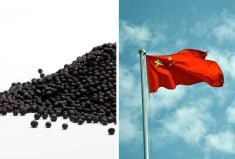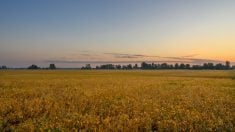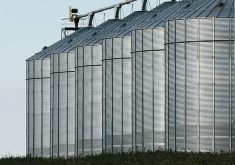Updated – Wednesday July 9, 2014 9:50 a.m. CST
The Assiniboine River is expected to peak at about noon Wednesday at Portage la Prairie, where the majority of the water is being forced north into Lake Manitoba in order to take pressure off communities from Portage to Winnipeg.
That is a concern for producers around Lake Manitoba, where many farmers lost thousands of acres in 2011 due to the provincial government sending water north.
The river crest is expected to be higher, so cattle producers are anxiously watching the weather forecasts. Any significant wind on the lake will cause swells and push water beyond the lake boundaries if levels rise much more.
Read Also

Canada and China discuss disputes over canola and EVs, says Ottawa
Senior Canadian and Chinese officials discussed bilateral trade disputes involving canola and electric vehicles on Friday, Ottawa said, but gave no indication of any immediate breakthrough.
The problem for cattle producers around Lake Manitoba is exacerbated by the lack of progress by the provincial government on building a permanent northern outlet to allow as much water out of the lake as is being poured into it. During the 2011 floods, the government dug a simple overflow channel system, but that has been hampered and held back from working at full capacity by protests from a First Nation on Lake St. Martin.
That band is upset that many of its concerns and problems from 2011 haven’t been dealt with.
The government has embraced the idea of a better outflow channel that would take water from Lake Manitoba through Lake St. Martin and into Lake Winnipeg, but was only planning to do consultations on the idea this fall.
Updated – Wednesday July 9, 2014 9 a.m. CST
Water levels that are one foot higher than in 2011 have prompted the Manitoba government to declare a state of emergency along the lower Assiniboine River from Portage la Prairie to Winnipeg.
The river is expected to crest at the entrance to the Portage Diversion at noon Wednesday, reaching 50,000 cubic feet per second, with 34,000 being sent north through the diversion into Lake Manitoba.
This is a concern for cattle producers who live around the lake, which was purposely flooded by the Manitoba government in 2011 because of spring flooding. While great amounts of water can be dumped into the lake, the outflow is restricted, causing levels to rise if the inflow and outflow are unbalanced.
More water is also flowing into the Shellmouth reservoir than is flowing out, with the peak expected Friday.
One crest has passed in Brandon with another expected July 17, as water from the upper Assiniboine and Qu’appelle rivers goes through. The Qu’appelle is at record flow levels and higher than the previous crest.
Disaster sightseers are getting in the way of emergency flood-fighting crews and are being asked to stay away.
Military, provincial, municipal and volunteer work crews are prepared to step in to shore up weakening dikes. So farm almost 213,000 sandbags have been made and 184,000 have been delivered, with 76,000 more expected in the next 24 hours.
The rural municipalities of Cartier and St. Francois Xavier are still looking for volunteers. They can be contacted at (204) 353-4005 for St. Francis and (204) 864-2874 for Cartier.
More than 700 people have been evacuated from flood zones, with 55 municipalities declaring states of emergency.















